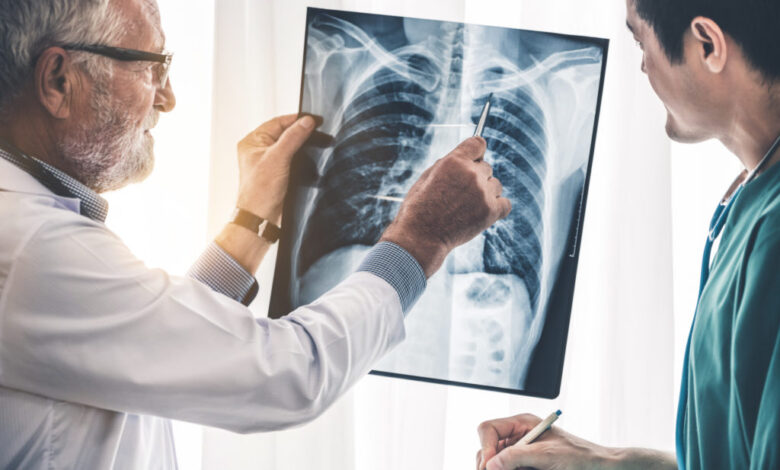Chest Injuries: 7 Signs And Treatment Options

Damage from gunshots, car accidents or penetration of an object like a knife may cause distress in a person. A chest injury, for instance, generally poses a threat and health risk to anyone who sustains them. It can be as minor as light bruising or something serious such as a fractured rib that requires immediate medical attention. And in some cases, patients who damage their ribcage or chest cavity may quickly cycle from being alert and awake to life-threatening instances.
Signs Of A Chest Injury
During an unfortunate incident, bystanders only have a few minutes to help the patient needing assistance, so having their wits about them and finding clever first aid solutions is essential. And knowing the signs that could indicate that a person is suffering from a chest injury would significantly help speed up the decision-making process so intervention can start.

Common signs to look for include:
- Pain: If the patient is conscious, they’re likely to describe a stabbing pain in their chest area, especially when breathing, sneezing, or coughing.
- Breathing becomes labored: The patient could also report they’re struggling to breathe or experiencing tightness around their chest. However, if the patient is unable to communicate their symptoms, pay attention to how they breathe. There may be odd breathing sounds, such as a gurgling sound or wheezing when they inhale or exhale.
- Pale And Clammy Skin: A patient who has a chest injury may seem paler. Their skin could also become clammy.
- Distended neck veins: You may also notice their veins are raised and look more prominent than usual on their necks.
- Moving trachea: Observe them when they breathe- you may see the windpipe (trachea) in their neck move to one side.
- Segments of the chest move independently: A condition called flail chest is where the ribs may have cleanly broken off from the rest of the ribcage. In such a case, there may be a part that seems to move independently, not with the rest of the ribcage.
- Coughing up blood: If the patient sustains a serious chest injury, they’re also likely to have internal bleeding. An indication of this case is when they start coughing up blood.
Treatment For Chest Injuries
While the best approach is to seek medical attention right away, especially in critical situations, there are some things you can do to offer the patient relief while waiting for medical assistance. These include:
- Provide first-aid treatment: Assist the patient to a more comfortable position to help lessen the pressure when breathing. If there’s bleeding present, cover the affected site with a clean cloth and add pressure to help minimize and control the bleeding. For more information on first aid products, go to the website for details on the products you may need to use in such instances.
- Stabilize sharp objects: Treat a patient with a protruding object from the chest with caution. Don’t remove it. And if at all possible, secure the object so it doesn’t move around too much and cause more damage. You can use standard first aid bandage rolls to pack around the impaled object to stabilize it.
Once the medical team arrives, they can help better assess the patient’s case and administer the appropriate treatment. Here’s a list of medical procedures done by medical professionals when treating a chest injury.
- Needle decompression: One of the possible complications of a chest injury is tension pneumothorax. This condition is characterized by having air between the chest wall and the lungs. Escaping air from the lungs puts pressure on the internal organs like the lungs, heart, and diaphragm. Inserting a needle through the skin into this cavity allows the trapped air to escape, providing relief to the patient.
- Thoracostomy: This procedure involves cutting a small opening between the ribs and inserting a sterile tube into the chest cavity. The inserted pipe will drain air, blood, and fluids that accumulate around the lungs and heart to improve the patient’s breathing. It is a relatively safe procedure, and emergency services and hospitals commonly use it.
- Dressing with a valve: Open wounds to the chest may cause air to be sucked into the cavity, causing similar signs as a closed pneumothorax. The dressing can help prevent the patient from bleeding out while the one-way valve supports their breathing functions.
- Pericardiocentesis: There’s a membrane surrounding the heart which encases it. When blood accumulates between this membrane and the heart, it effectively envelops the heart and puts added pressure on it. The added pressure may cause the heart to beat irregularly or stop altogether. Medical professionals perform this procedure to address that.
- Intravenous fluid support: A drip with fluids rapidly flowing into the person’s system may help counter the blood loss they’re experiencing from their extensive injuries. When there is heavy bleeding in various body areas, like in a drunk driving accident, the person may go into hypovolemic shock.
To Conclude
Assessment can take seconds if you know what to look for in the patient. And quickly identifying their injuries can lead to split-second decisions that may save their life.
While professional medical care is crucial for complete recovery from a chest injury, your quick response can help contribute more than you may think. There are simple and effective methods that anyone can apply to assist the patient while waiting for professional medical help to arrive. And so, familiarize yourself with helpful tools in every first aid kit, and be prepared to save a life.



